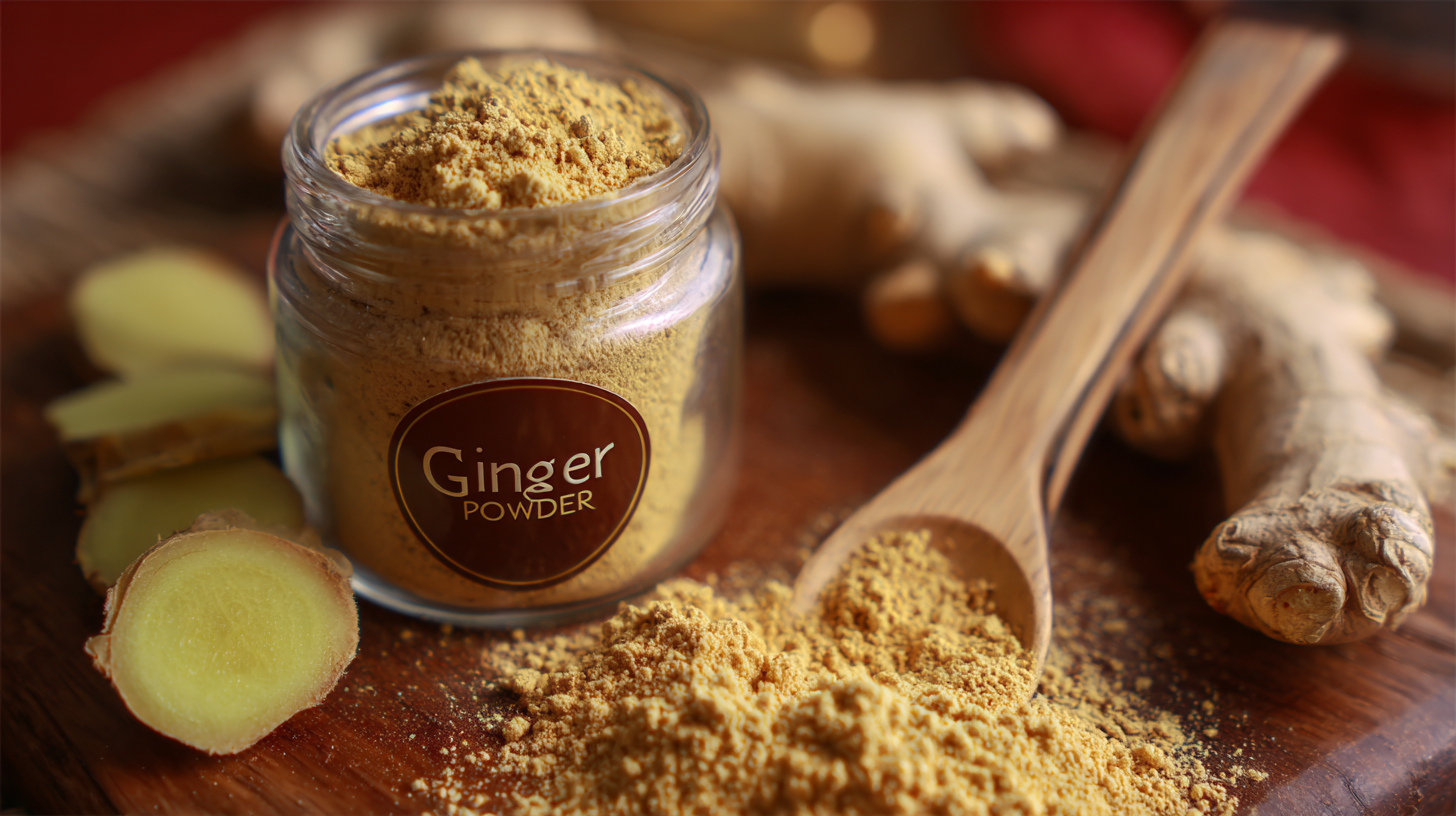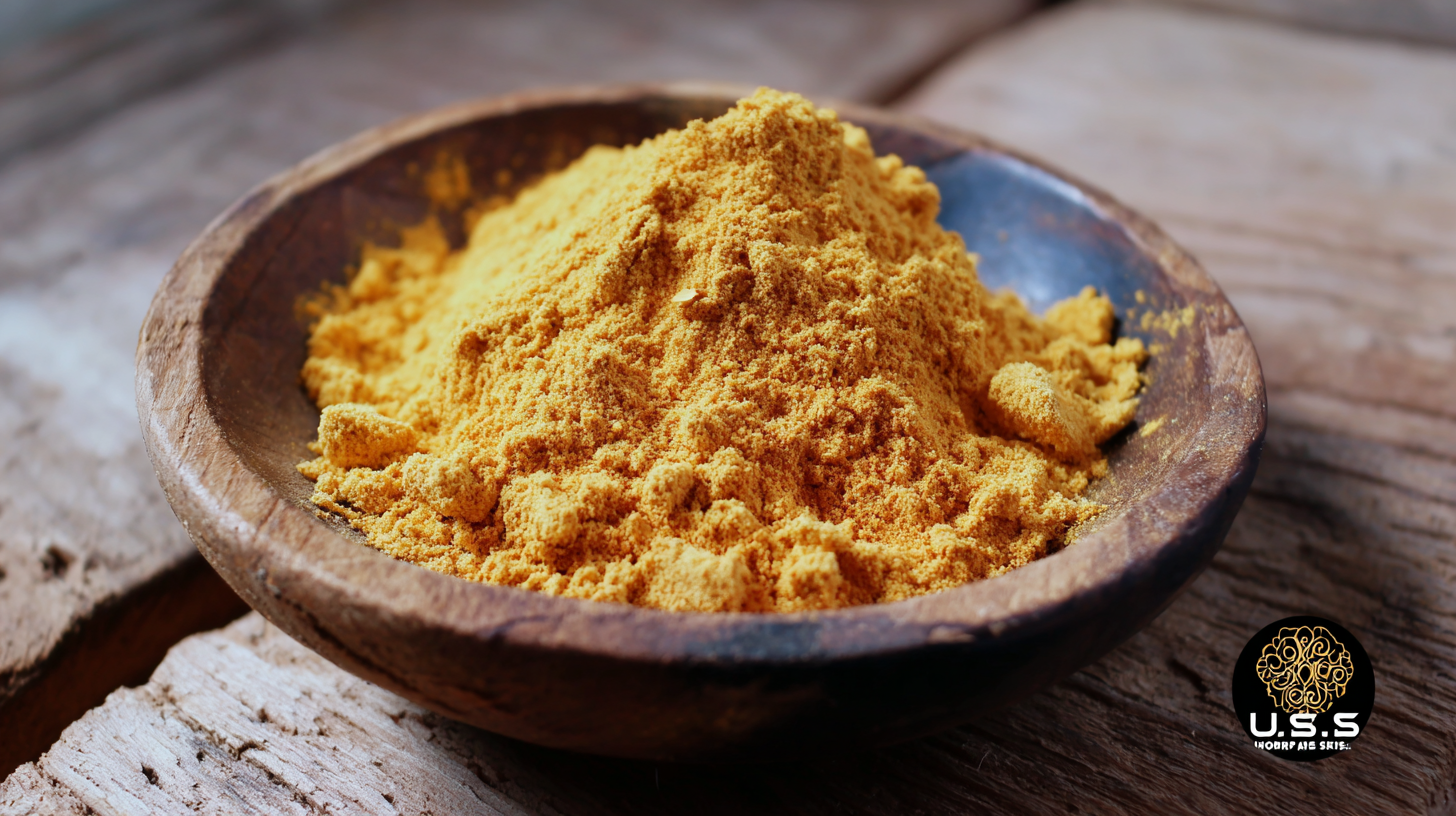Exploring the Unique Qualities of Best Ginger Powder and How to Choose the Right Type for Your Needs
Ginger powder, a staple in kitchens around the world, is renowned not only for its distinctive flavor but also for its impressive health benefits. According to a report by Grand View Research, the global ginger powder market is expected to reach USD 3.50 billion by 2025, driven by rising consumer awareness of health and wellness. This demand highlights the diverse applications of ginger powder, ranging from culinary uses to medicinal applications. However, not all ginger powders are created equal; variations exist in terms of processing methods, quality, and type, each offering unique attributes that cater to different needs. This blog explores the distinct qualities of the best ginger powder on the market, providing insights on how to choose the right type for your specific requirements, whether for cooking, baking, or health-enhancing purposes.

Understanding the Health Benefits of Ginger Powder and Its Unique Qualities
Ginger powder, derived from the dried root of the ginger plant, is a powerhouse of health benefits that can enhance your well-being in numerous ways. Rich in antioxidants, ginger powder is known for its anti-inflammatory properties, making it an excellent remedy for reducing muscle pain and soreness. It also aids digestion, helping to alleviate nausea and bloating, which can be particularly beneficial for those suffering from motion sickness or morning sickness during pregnancy. Additionally, ginger powder has been linked to improved circulation and can even help in regulating blood sugar levels, making it a valuable addition to the daily diet.

When selecting the right ginger powder, quality is crucial. Look for products that are labeled as organic and sourced from reputable growers. The color should be a rich, golden-brown, and the aroma should be strong and pungent, indicating its potency. Different varieties of ginger can offer unique flavor profiles and health benefits, so consider your specific needs—whether it's for culinary use or medicinal purposes. Choosing the right type of ginger powder can significantly impact its effectiveness and your overall health, ensuring that you reap the full rewards of this incredible spice.
Key Factors to Consider When Choosing the Best Ginger Powder for Cooking
When it comes to choosing the best ginger powder for your cooking needs, several key factors should be considered to ensure you select the right type. First and foremost, the quality of the ginger root used can significantly affect flavor and potency. Look for products that list 100% ginger root without additives or fillers. Organic options often provide a more robust flavor and ensure that no harmful pesticides have been used during cultivation.

Another important factor is the grinding process. Ginger powder that is finely ground tends to blend better into recipes, providing a smooth texture. Coarser powders may require longer cooking times to fully integrate into dishes. Additionally, pay attention to the aroma; fresh ginger powder should have a strong, spicy scent. If the smell is faint, it may indicate that the powder has lost its potency over time.
Tips: Always check the expiration date on the packaging, as ginger powder can lose its flavor over time. For optimal freshness, store your ginger powder in an airtight container in a cool, dark place. When experimenting with recipes, start with a small amount; you can always add more if you desire a stronger ginger flavor. This approach allows you to customize dishes to your taste preferences without overwhelming them.
Types of Ginger Powder: What to Look for Based on Your Culinary Needs
When choosing the right type of ginger powder for your culinary needs, it's essential to consider the different varieties available. Each type can impart unique flavors and medicinal properties to your dishes. Typically, you'll find three main types: dried ginger powder, which has a warm and spicy flavor; fresh ginger powder, offering a more vibrant and aromatic profile; and roasted ginger powder, which provides a milder flavor with a hint of sweetness. Depending on your recipe, selecting the right type can enhance your dish significantly.
Tips for selecting good ginger powder include checking the packaging for freshness. Look for products that have a harvest date or a vacuum-sealed option to ensure maximum potency. Additionally, consider the origin of the ginger; some regions are known for producing higher-quality ginger with richer flavor profiles. If you’re using ginger in baking, fresh ginger powder may add a brighter note, while dried ginger is perfect for savory dishes and sauces.
Finally, always pay attention to the color and aroma of the ginger powder you choose. A vibrant, golden color indicates freshness, while a strong, aromatic scent is a good sign that the powder is potent. These details can make all the difference in achieving the perfect taste in your culinary creations.
How to Properly Store Ginger Powder for Maximum Freshness and Flavor
Properly storing ginger powder is key to maintaining its freshness and flavor over time. First and foremost, it’s essential to keep ginger powder in an airtight container to prevent moisture and air from degrading its quality. A glass jar with a tight-sealing lid is ideal, as it provides a strong barrier against humidity and other contaminants. Additionally, the container should be kept in a cool, dark place away from direct sunlight, as exposure to light can cause the powder to lose its vibrant flavor profile.
Temperature plays a crucial role in the shelf life of ginger powder. Storing it in a refrigerator might seem like a good idea, but it can actually introduce moisture, which is counterproductive. Instead, a pantry or a cupboard with a stable temperature is best. It’s also wise to regularly check for any signs of clumping or an off smell, as these are indicators that the powder has lost its potency. By following these storage tips, you can ensure that your ginger powder retains its aromatic qualities and continues to enhance your culinary creations.
Exploring the Freshness of Ginger Powder Variants
This chart illustrates the flavor intensity of various types of ginger powder on a scale from 1 to 10. Choosing the right ginger powder can enhance your culinary creations, with freshly ground ginger providing the highest intensity of flavor.
Recognizing Quality Indicators: How to Spot High-Grade Ginger Powder
When it comes to selecting high-grade ginger powder, there are several quality indicators that consumers should consider. Firstly, the color of the ginger powder is a crucial factor. Quality ginger powder should have a vibrant yellow-orange hue, which indicates that it has been made from mature ginger rhizomes rich in essential oils and active compounds. According to a report by the Spices Board of India, premium ginger powder retains a higher level of these oils, which contributes to its flavor and health benefits.
Another important aspect to examine is the aroma. Top-quality ginger powder emits a strong, spicy fragrance, indicating its freshness and potency. A lack of aroma or a musty smell can signify that the powder has lost its potency or has been improperly stored. Research published in the Journal of Food Science has found that ginger powder with a volatile oil content above 1.5% is generally regarded as high-grade, providing better flavor and health properties. Lastly, always check for USDA organic certification or similar quality assurances, as these certifications often reflect better production practices and higher quality standards, ensuring you get a product that meets your health needs.
Exploring the Unique Qualities of Best Ginger Powder and How to Choose the Right Type for Your Needs - Recognizing Quality Indicators: How to Spot High-Grade Ginger Powder
| Quality Indicator | Description | Grade | Color |
|---|---|---|---|
| Appearance | Fine texture, no clumps | High | Light yellow to tan |
| Aroma | Strong, pungent smell | High | N/A |
| Taste | Spicy and hot flavor | High | N/A |
| Source | Originating from high-quality regions | High | N/A |
| Packaging | Properly sealed and labeled | High | N/A |
